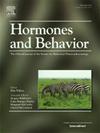微/纳米塑料诱导的啮齿动物内分泌干扰的系统综述和实验研究:与自闭症谱系障碍的潜在联系
IF 2.4
3区 医学
Q2 BEHAVIORAL SCIENCES
引用次数: 0
摘要
最近的研究表明,在啮齿动物模型中,微塑料(直径5毫米)和纳米塑料(直径1 μm)暴露会产生内分泌干扰效应,并导致自闭症谱系障碍(ASD)样行为。我们结合了(i)系统的文献综述和(ii)实验研究,综合了微/纳米塑料(MNP)暴露与ASD之间联系的潜在机制,重点是内分泌干扰和利用啮齿动物模型的文章。首先,我们识别和讨论文献中的趋势,概述研究差距,并建议未来的方向。大多数文章测量了雄性成年啮齿动物的性腺激素,并一致报告了MNP暴露后睾酮(T)、黄体生成素(LH)和卵泡刺激素(FSH)的下降。对女性进行了充分的研究,没有发现暴露引起的激素紊乱的趋势。其次,我们提供的实验数据表明母体聚苯乙烯NP暴露对胎儿大脑神经内分泌系统和炎症标志物的直接影响。产前暴露于np后,胎儿脑内细胞因子、白细胞介素-2 (IL-2)、白细胞介素-6 (IL-6)和三碘甲状腺原氨酸(T3)显著改变,女性暴露于np的胎儿甲状腺素(T4)和T显著抑制,而男性暴露于np的胎儿则无显著抑制。总之,这些发现表明,在成年期和发育早期接触MNP会以性别依赖的方式影响多种内分泌系统,包括与自闭症谱系障碍有关的内分泌系统。我们综合了这些结果对激励动物和人类暴露研究以及未来MNPs监管指南的重要性。本文章由计算机程序翻译,如有差异,请以英文原文为准。
A systematic review and experimental study of micro/nanoplastic-induced endocrine disruption in rodents: Potential links to autism spectrum disorder
Recent research shows that microplastic (diameter < 5 mm) and nanoplastic (diameter < 1 μm) exposures can have endocrine-disrupting effects and lead to autism spectrum disorder (ASD)-like behaviours in rodent models. We combine both a (i) systematic literature review and (ii) experimental study to synthesize the potential mechanisms underlying the link between micro−/nanoplastic (MNP) exposure and ASD, focusing on endocrine disruption and articles utilizing rodent models. First, we identify and discuss trends in the literature, outline research gaps, and suggest future directions. Most articles measured gonadal hormones in male adult rodents and consistently reported decreased testosterone (T), luteinizing hormone (LH) and follicle-stimulating hormone (FSH) with MNP exposure. Females were understudied, with no trends emerging in exposure-induced hormone disruption. Second, we present experimental data demonstrating direct effects of maternal polystyrene NP exposure on neuroendocrine systems and inflammatory markers in the fetal brain. Cytokines, interleukin-2 (IL-2) and interleukin-6 (IL-6), and triiodothyronine (T3) were significantly altered in the fetal brain following prenatal exposure to NPs, and thyroxine (T4) and T were significantly suppressed in female NP-exposed fetuses but not in males. Together, these findings demonstrate that MNP exposure during adulthood and early development affect multiple endocrine systems, including those implicated in autism spectrum disorder, in a sex-dependent manner. We synthesize how such results are important to motivate exposure studies in animals and humans and future regulatory guidelines on MNPs.
求助全文
通过发布文献求助,成功后即可免费获取论文全文。
去求助
来源期刊

Hormones and Behavior
医学-行为科学
CiteScore
6.70
自引率
8.60%
发文量
139
审稿时长
91 days
期刊介绍:
Hormones and Behavior publishes original research articles, reviews and special issues concerning hormone-brain-behavior relationships, broadly defined. The journal''s scope ranges from laboratory and field studies concerning neuroendocrine as well as endocrine mechanisms controlling the development or adult expression of behavior to studies concerning the environmental control and evolutionary significance of hormone-behavior relationships. The journal welcomes studies conducted on species ranging from invertebrates to mammals, including humans.
 求助内容:
求助内容: 应助结果提醒方式:
应助结果提醒方式:


